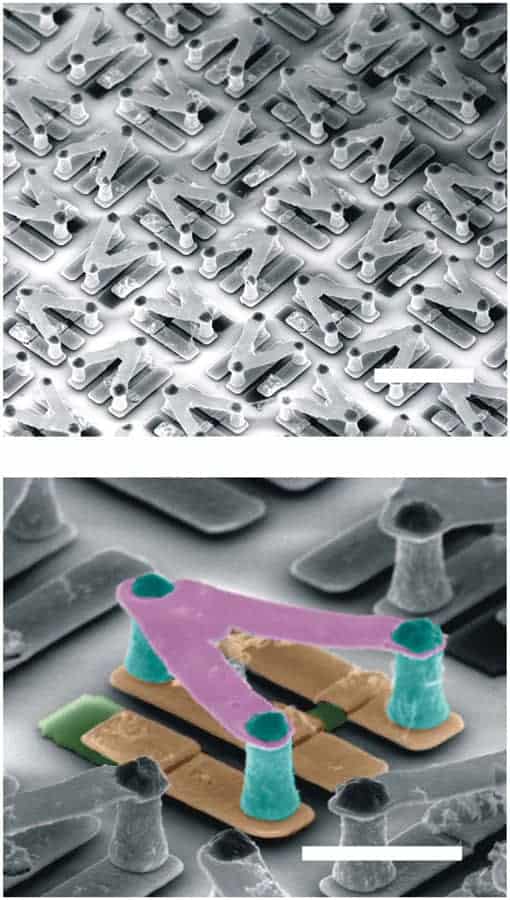
Physicists in the US and UK have created a new metamaterial with a handendness, or “chirality”, that can be switched on demand. Operating in the terahertz region of the electromagnetic spectrum, the material can be used to manipulate the polarization of terahertz waves. It could therefore lead to new types of terahertz technologies for scanning and telecommunications.
The left – or right-handedness of an object plays an important role in defining how it interacts with the outside world. Many processes in biology, for example, are governed by the chirality of the molecules involved. Moreover, the chirality of a molecule or material affects how it interacts with electromagnetic radiation, which means that chirality can play an important role in the design of telecommunications and scanning technologies.
Terahertz electromagnetic radiation shows great promise for these applications because it passes easily through materials such as paper or clothes. It occurs at wavelengths of about 100 μm, which means that it can be manipulated by “metamaterials” – artificial structures of repeating elements each of which interacts in a specific way with electromagnetic radiation – that have a periodicity of roughly this length.
V-shaped resonators
In this latest work, Xiang Zhang of the Lawrence Berkeley National Laboratory and colleagues made a metamaterial that comprises “V”-shaped gold elements in a 2D array. A unit cell of the array is a square containing fours Vs, the vertices of which are arranged to point in an anticlockwise direction (see figure). The vertex and ends of each V are held up by gold pillars 4 μm tall, each of which is connected to a separate gold electrode. The unit cell itself is 50 μm on side and the entire structure rests on an aluminium oxide substrate.
Each of these 3D V-structures can be thought of as a pair of coupled split-ring resonators – structures that form the basis of many electromagnetic metamaterials. The important thing about the pair is that the resonators have opposite chirality, which means that each will absorb terahertz radiation of the opposite circular polarization. This ability to absorb radiation according to its polarization is known as circular dichroism.
Normally, the two resonators cancel each other out and the V-structure has no overall circular dichroism. But if an electrical connection is made between one resonator’s electrodes, then that resonator no longer functions and the V-structure acquires the chirality of the other working resonator. Zhang and colleagues make this connection from silicon, which – when exposed to infrared light – becomes a conductor.
The team also used a strip of silicon to extend the length of one of the electrodes. When light strikes this electrode, the capacitance of one of the resonators is changed. As a result the V-structure can be switched from a state in which both resonators exhibit circular dichroism at the same terahertz frequency, to a state where circular dichroism occurs at two different frequencies.
Switching chiralities
By putting four V-structures into each repeating unit cell, the team is able to create a metamaterial with circular dichroism that can be switched in direction when exposed to infrared light. “In contrast to previous demonstrations, where chirality was merely switched on or off in metamaterials using photoelectric stimulation, we used an optical switch to actually reverse the chirality of our terahertz [resonators],” explains Zhang.
The team says that the ability to control the chirality of the metamaterial could be used to create detection systems that are sensitive to the polarization of terahertz radiation. This could prove useful in terahertz scanning systems, which could detect the presence of certain molecules by how they interact with circularly polarized light. It could also be used to boost the transmission capacity of terahertz communications systems by allowing data to be encoded using circular polarization.
“This frequency range is particularly interesting because it uniquely reveals information about physical phenomena, such as the interactions between or within biologically relevant molecules, and may enable control of electronic states in novel material systems, such as cyclotron resonances in graphene and topological insulators,” says Antoinette Taylor of the Los Alamos National Laboratory, who was also involved in the research.
The metamaterial is described in Nature Communications.



